It’s hard to understand the scale of Aspendos until you’re standing inside its theater. The vast Roman theater, carved into the slope of a hill in southern Turkey, seems to rise out of the stone itself. And despite the centuries that separate its original use from our present footsteps, it remains astonishingly intact.
We visited Aspendos as part of a day trip that also included Perge and Side. While there are other ruins in the area, including aqueducts and basilicas, the highlight by far is the amphitheater.
A near-perfect Roman theater
Aspendos boasts one of the best-preserved Roman theaters in the world. Built in the 2nd century CE during the reign of Emperor Marcus Aurelius, the structure could seat up to 15,000 to 20,000 spectators. Designed by the architect Zenon, it was constructed using local limestone and showcases a semi-circular design typical of Roman engineering.
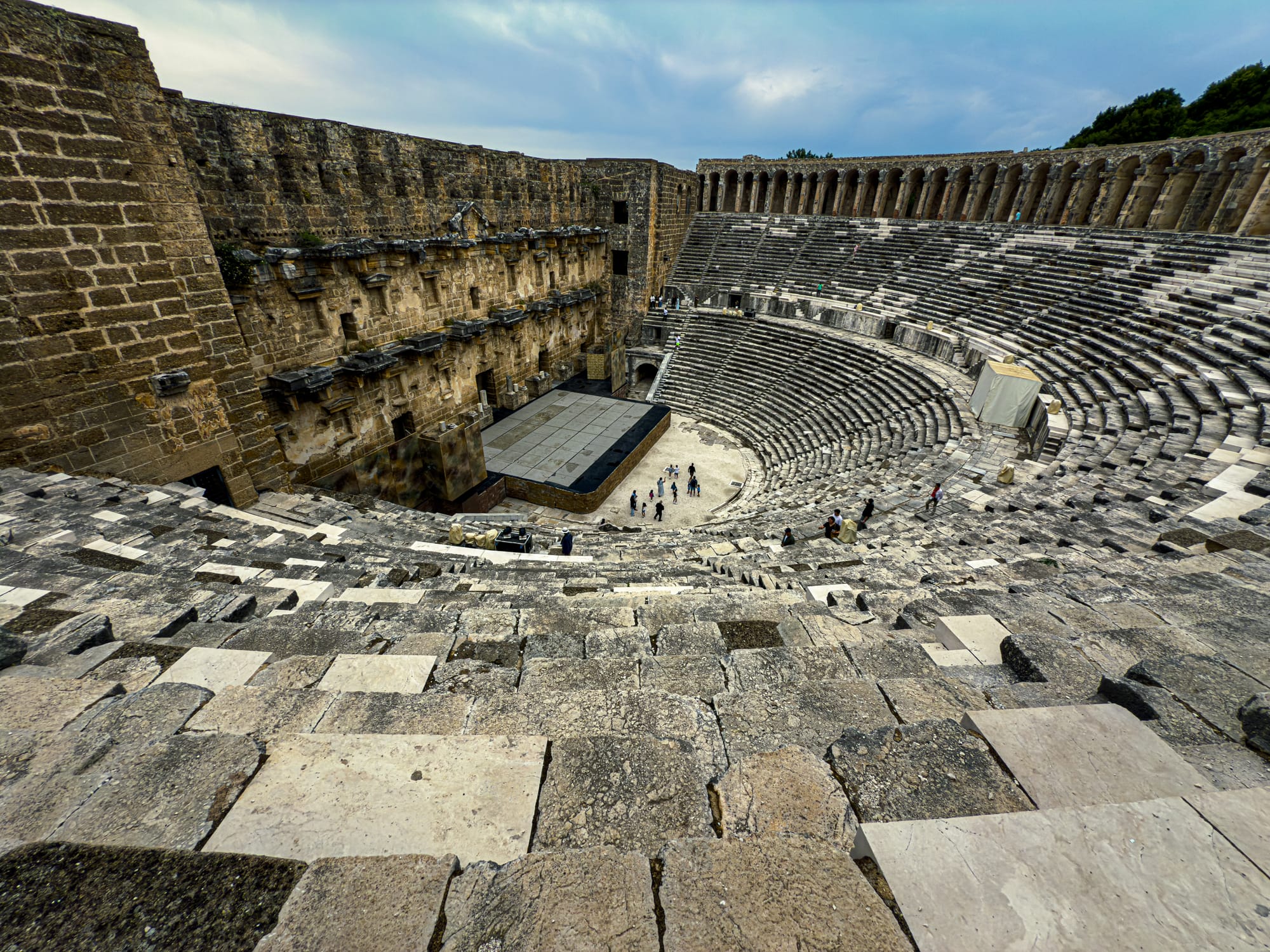
The stage building (scaenae frons) is still intact, rising multiple stories with ornate columns and arches. Behind it, the backdrop wall remains remarkably well preserved, giving a strong sense of the theater's original acoustics and visual grandeur.
Still in use
What’s extraordinary about Aspendos is that it isn’t just a ruin. It’s still a stage.
While we didn’t catch a live performance ourselves, several fellow travelers highly recommended the Fire of Anatolia show, which regularly takes place there. Blending traditional Turkish dance, modern choreography, and large-scale stagecraft, the production brings the amphitheater back to life in a way that is both grounded in heritage and globally spectacular.
If you’re interested in seeing the Aspendos stage in action—complete with lighting, music, and full ensemble movement—you can book tickets to the Fire of Anatolia show here.
It’s said to be an unforgettable way to experience the site not just as history, but as living performance.
Walking through
The amphitheater itself takes a while to walk through. We entered through the main gate, where the thick stone walls narrow into vaulted corridors. From there, we climbed the stepped seating, pausing to take in the full sweep of the semicircle. Even with tourists scattered throughout, it felt vast.
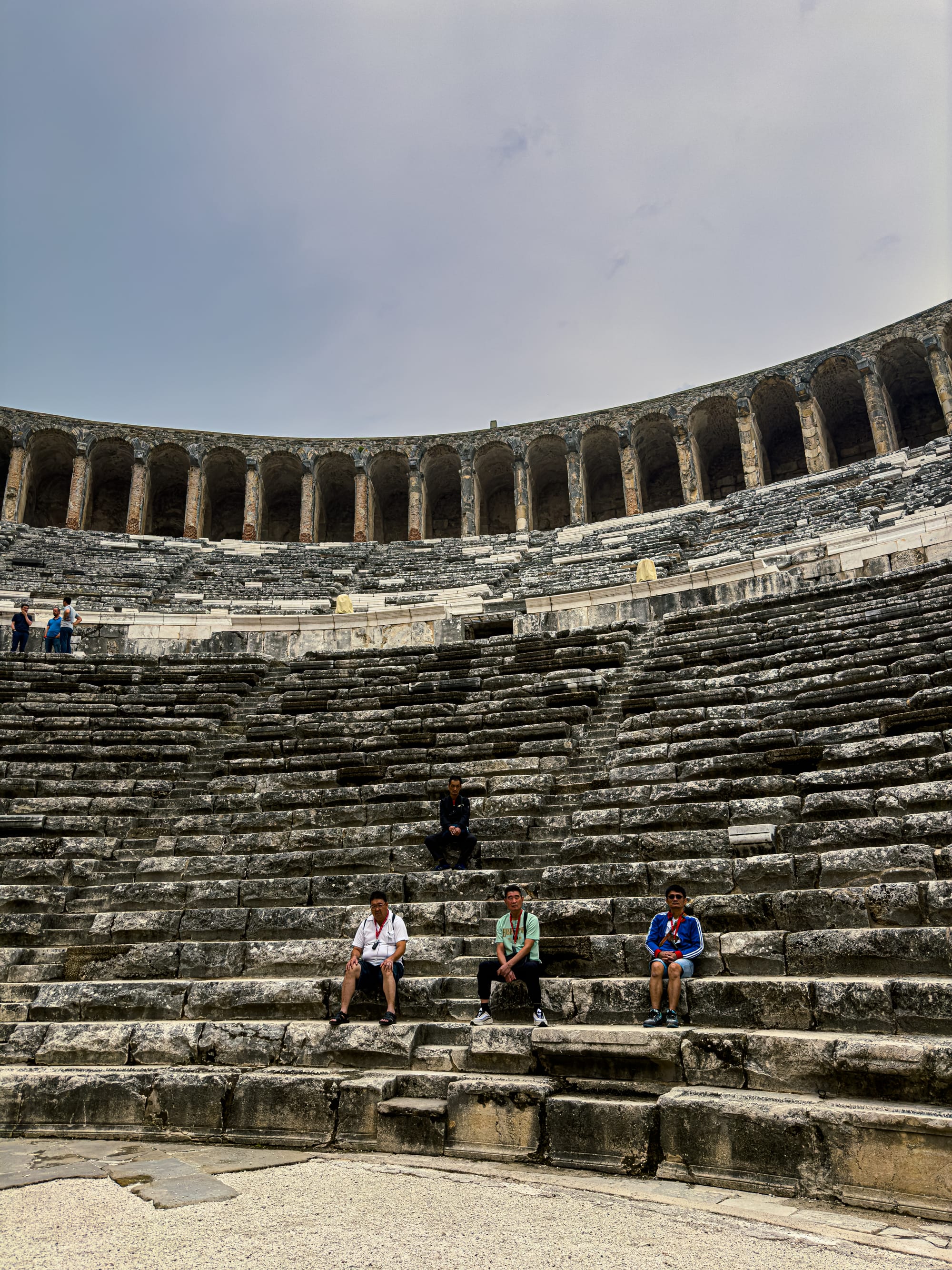
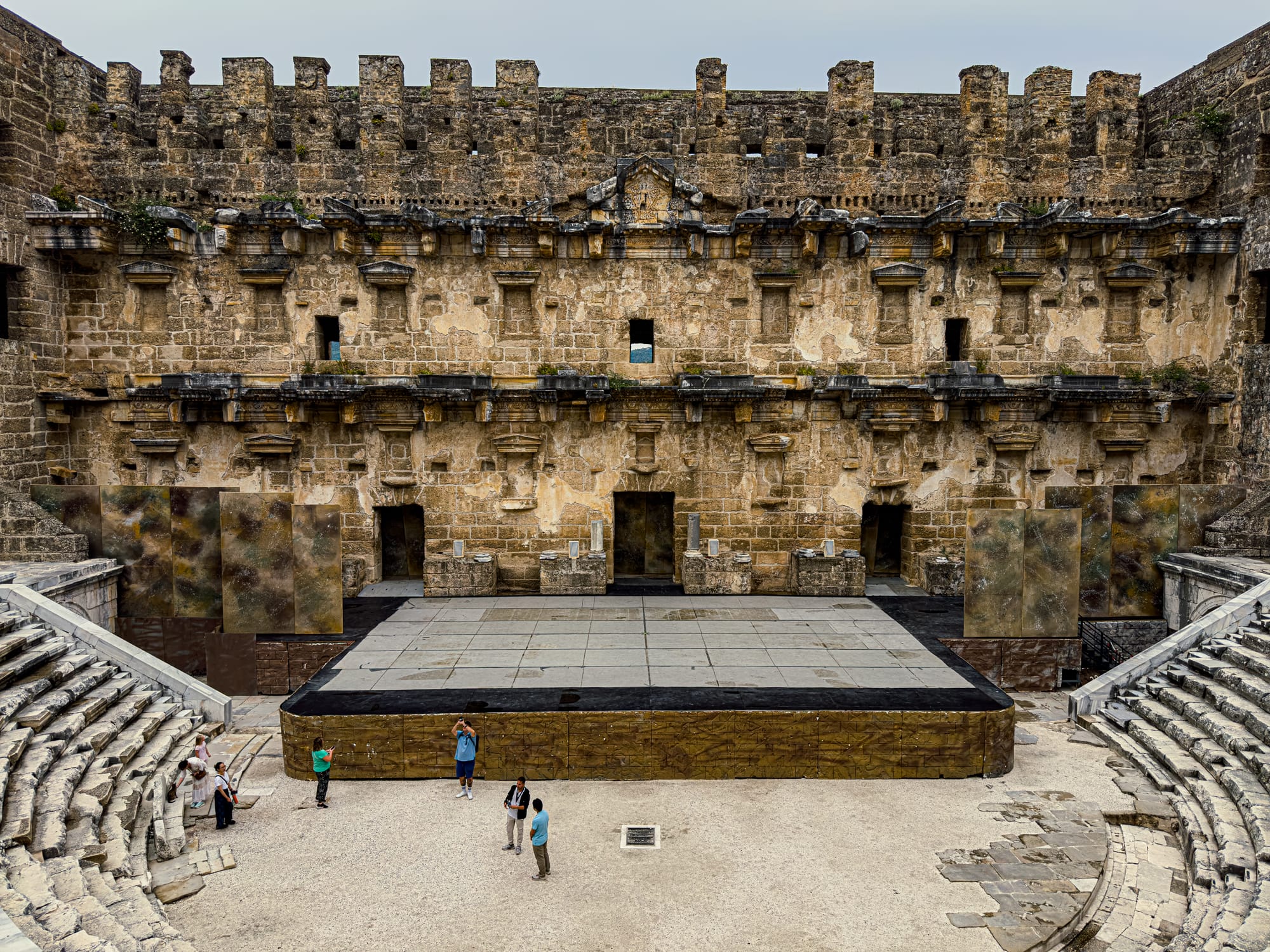
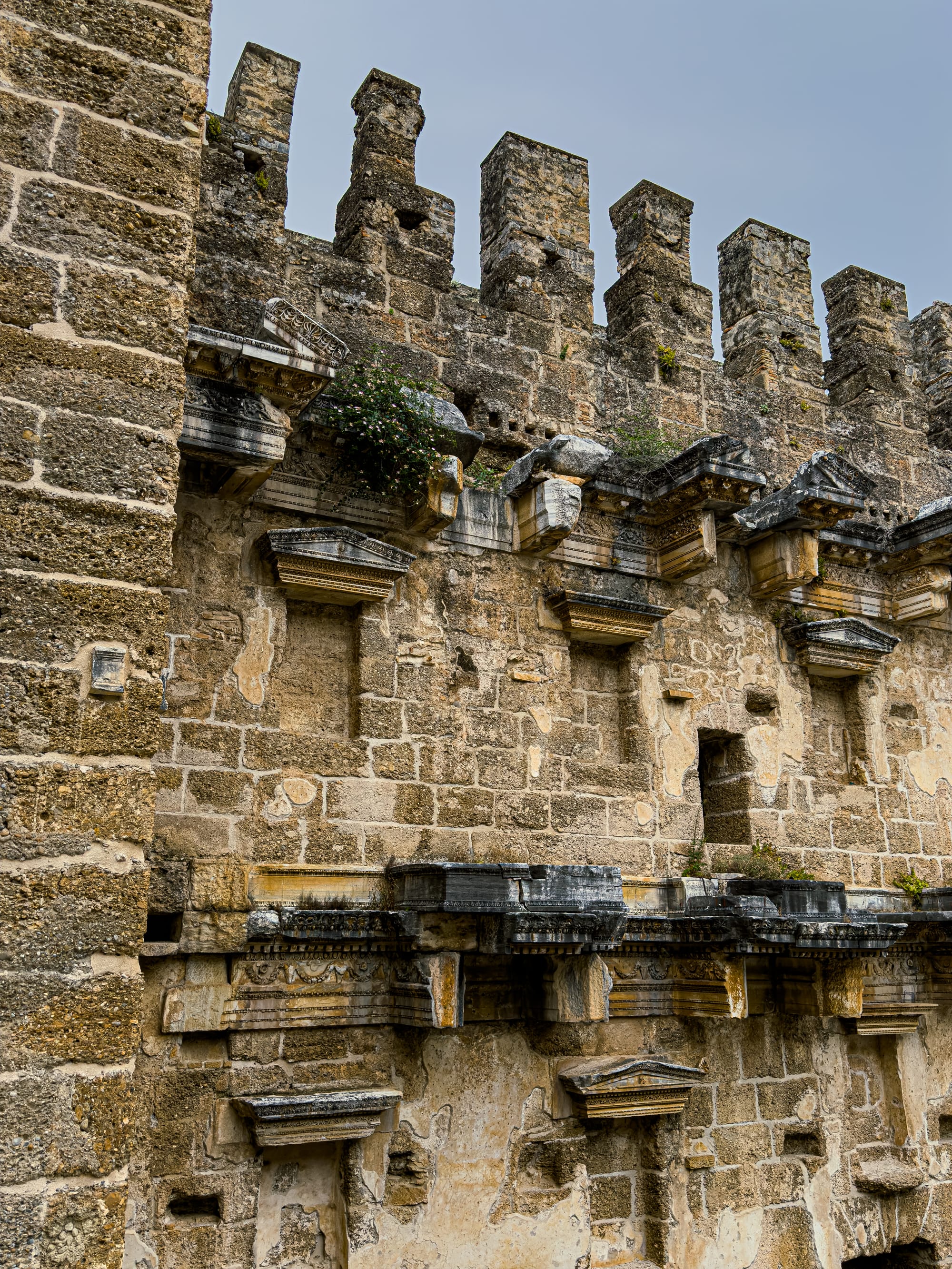
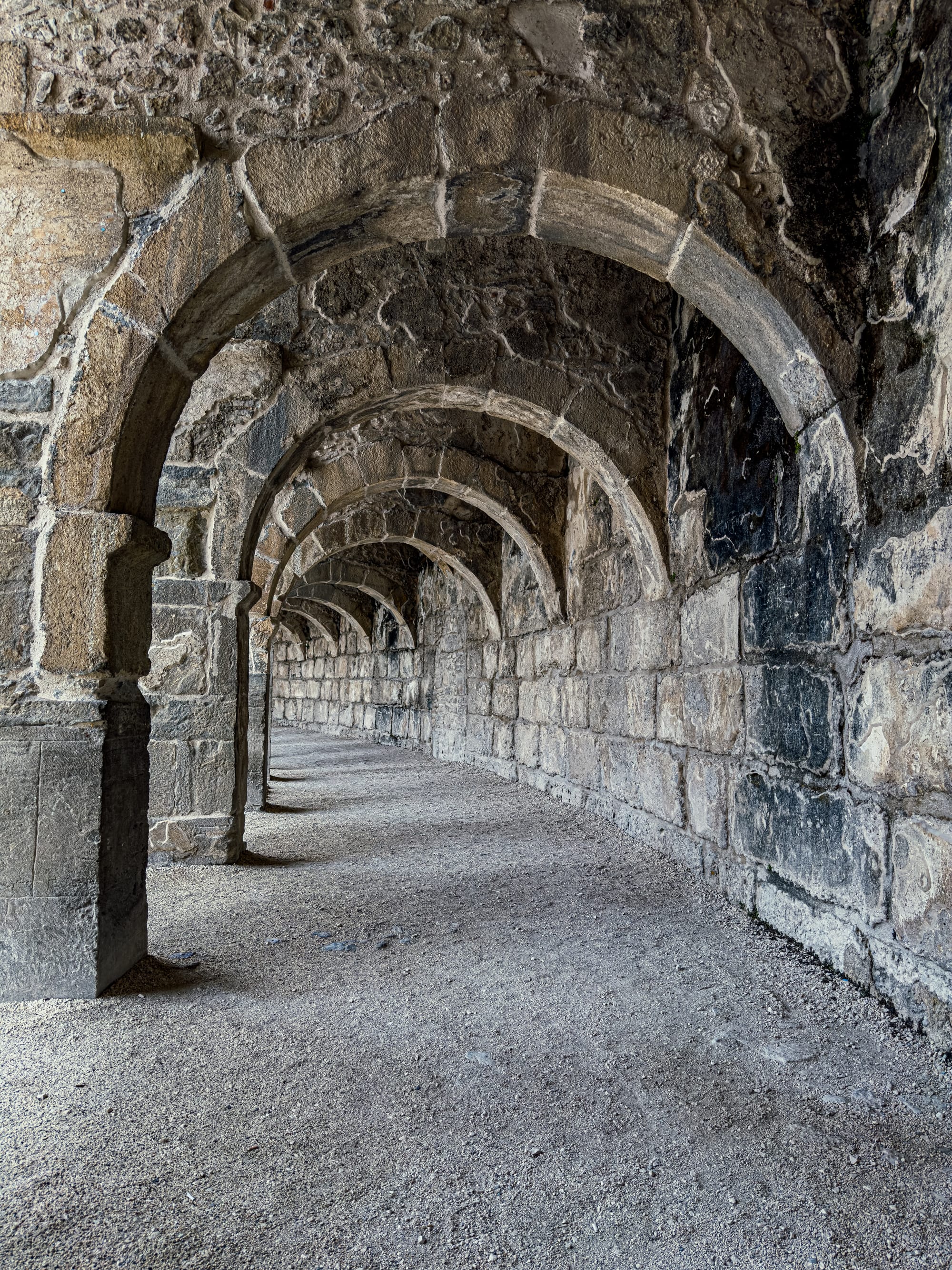
Details from Aspendos’s vast Roman theater—stone seats, fortified walls, and arched corridors
From the top rows, the view expands outward. To the north, the outlines of other ruins are visible, including remains of a basilica, an agora, and the famous aqueduct system that once brought water to the city.
A glimpse into Aspendos
Aspendos was once a thriving ancient city founded by the Greeks and later absorbed into the Roman Empire. It flourished as a commercial center due to its location along the Eurymedon River, known today as the Köprüçay. In its prime, it minted its own coins and served as a vital trade and cultural hub.
While most of what remains today is fragmentary, the theater itself is enough to carry the city's legacy forward.
A moment to rest
After leaving, a tour group went to a local restaurant to grab a bite to eat before heading onward.

If you’re considering a visit, Aspendos pairs well with Side and Perge, as part of a day that strings together ancient grandeur and architectural prowess. This is the tour we did, which ties together the three and also stops at Manavgat Waterfalls.






